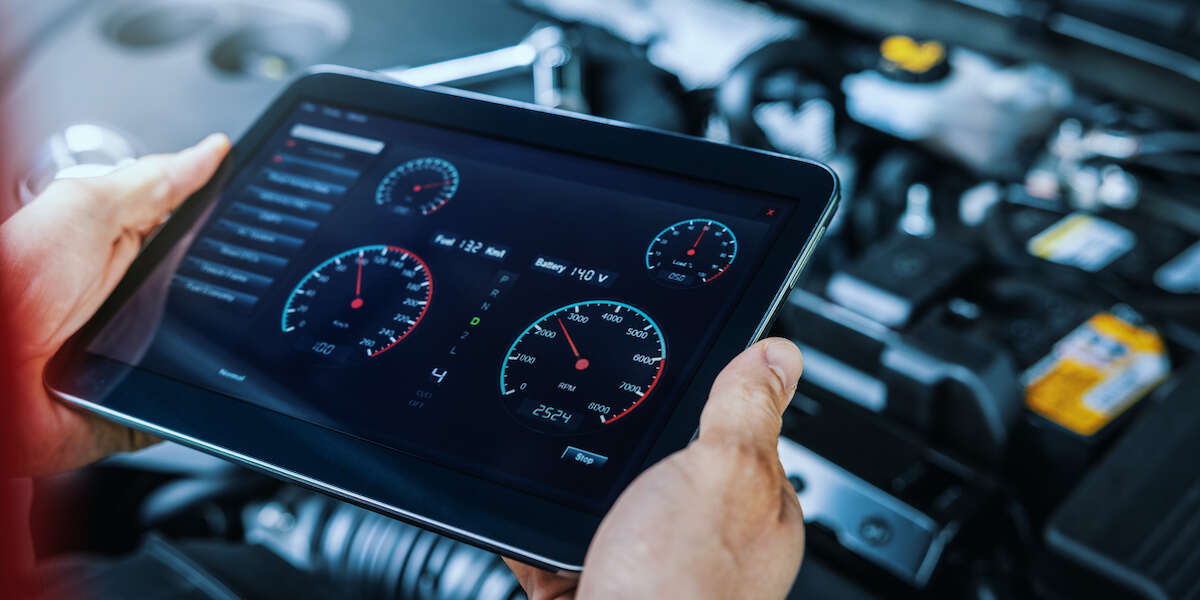No one likes a broken-down bus! For passengers it means delayed journeys, missed appointments and frustration. For operators it damages reputation as well as revenues, and for fleet managers it means vehicles off the road. Whether it is a bus, an excavator, a truck or other working vehicle, the costs associated with breakdowns are significant. Unplanned maintenance, let alone catastrophic failure that can leave vehicles marooned, add costs, and every hour in the ‘shop’ or on the side of the road is an hour of lost productivity and revenue. Yet the complexity of modern vehicles means that spotting root-causes that prevent high-value assets from working is increasingly difficult. The old ‘if-this-then-that’ fault-tree diagnostics can no longer keep pace. Mechanics, fleet operators and OEMs must work together to step into a new era of digital data-based diagnostics.
Today’s commercial vehicles are reliable, efficient and technologically advanced machines. But that does not mean that they don’t go wrong. Most have hundreds of sensors that provide a wealth of data on the operation of every element - from engine temperatures to tyre pressures. Vehicles self-diagnose and send fault codes to original manufacturers, owners and operators. But it takes a different set of skills to parse all this information and uncover root causes of problems. Gone are the days when an experienced mechanic could listen to the engine running and spot the problem! The paper-based (or even mental) decision-trees previously used to work methodically from observations to identified causes are simply not scalable to the massive amounts of data produced today.
But even as the sheer number of data produced today makes these manual processes unwieldly, it also provides the route to better and more timely diagnoses. Combining fault codes from individual vehicles with data from manufacturers (even down to individual part and batch levels) plus a wide array of additional data on usage, climate, terrain etc, can provide a richer and more detailed picture. Data analytics models can spot patterns, find relationships between seemingly disparate events and help mechanics intervene earlier and more precisely to keep things on the road.
Whether you lease, own or operate a fleet, automating data-driven diagnostics makes financial sense. On top of the cost of an asset being out of commission, and therefore either not earning revenue, or not contributing to delivering outcomes, there are the wider on-costs. Workers who cannot work, disruption to supply chains, dependant plant and vehicles left idle - all contribute to the cost of downtime. Clearly, investment in getting vehicles back to work faster could have rapid payback. Data-guided diagnostics is one example.
That’s not to suggest that mechanics need to become data scientists! Far from it, their skill lies in the quickly fixing mechanical issues. The role of data models is to quickly guide them to the precise issue first time rather than having to inspect the same vehicle several times in order to identify underlying issues. Mechanics don’t want complex algorithms – they need straight-forward insights that help them do their job. In many cases these can be automated – triggering simple alerts and suggesting where to investigate. More complex systems are being developed and deployed that present useful data as an overlay to real-world visual inspection in the form of augmented reality. Whatever the delivery method these guided and accelerated diagnostic tools rest on sophisticated data modelling.
This is where Teradata’s data analytics can step in to assist. Spotting patterns and predicting outcomes from wide, granular and fast-moving data is at the heart of Teradata’s heritage. Working closely with automotive businesses for the last 30 years Teradata has developed predictive models that help some of the largest automotive businesses to quickly home in on faults and establish the often-complex root causes. We do this by combining and integrating data from multiple systems, breaking down silos of information and spotting patterns that are proven to be predictive.
Data automation can help today’s mechanics find root cause faults faster and get commercial vehicles back on the road quicker. This leads to significant cost savings just through shortening the time vehicles are out of service and improving productivity of workshops. But sophisticated data modelling can also predict potential future breakdowns. Patterns of faults across hundreds of vehicles and thousands of parts can suggest likely patterns of failure. If part A has failed in certain circumstances, it’s likely that parts B and C, although working within acceptable parameters now, may fail within weeks. Far better to change them at the same time. This capability is the foundation for cost effective, widely deployable, predictive maintenance. I’ll look at the drivers for that in the next blog. Until then, if you are interested in hearing more about data-guided diagnostics for commercial vehicles, please get in touch.

